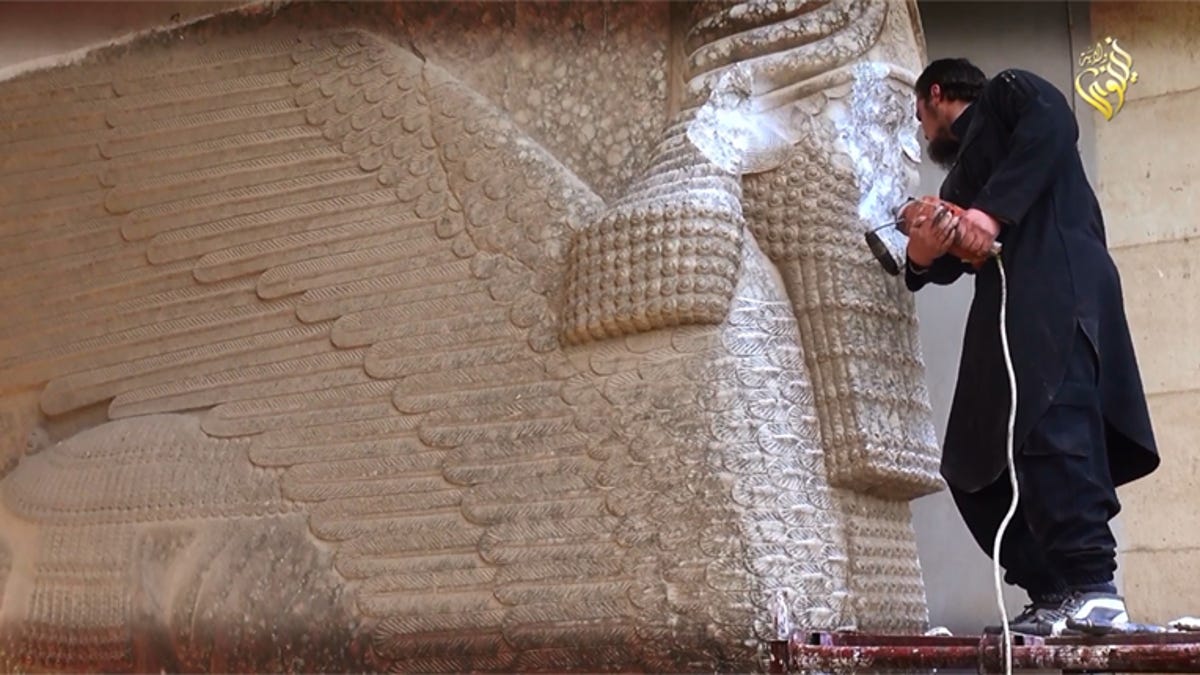Project Mosul to restore destroyed antiquities using 3D modelling
The priceless pieces of history destroyed by ISIS at the Mosul Museum may one day live again -- through 3D printing and one dedicated team.

Late last month, Islamic extremist group ISIS finally released a propaganda video realising the threat to heritage that had been looming since it took the city of Mosul, Iraq, in June of last year. In it, several ISIS members were seen destroying ancient pieces of history housed in the Mosul Museum -- ones of great cultural and historical importance.
Although it thankfully later transpired that many of these pieces were actually replicas, around 1,500 precious objects having been relocated after the museum was looted in 2003 during the 2003 Iraq War, some large objects considered too heavy to move were the real deal.
These included Assyrian artefacts, such as lamassu -- the winged, human-headed bulls -- flanking the Nergal Gate, dating back to around 700BC; and artefacts from Hatra, a thriving desert trading city that existed south of Mosul during the time of the Roman Empire -- the loss of which constitutes a massive 15 percent of all Hatrene artworks remaining in the world today.
It is the restoration of these objects that is the focus of a new project initiated by the Initial Training Network for Digital Cultural Heritage, an electronic preservation project aimed at the protection of cultural heritage. Called Project Mosul, it aims to restore the objects to existence by reconstructing them in 3D based on photographs of the artefacts.
"The video circulated around the 26th of February, 2015 shows the horrific destruction of the Mosul Museum by ISIS Fighters. This is not the first time this museum has suffered during times of conflict, but the destruction is nearly absolute, and this time we can respond through the application of digital technologies to cultural heritage," the Project Mosul website reads.
"We assume that much of the museum's contents were looted, and anything small enough to be easily removed will be appearing soon on the antiquities market. Anything too large to remove for sale, appears to have met a violent end at the hand of ISIS extremists. In both cases, it is possible to virtually recreate the lost items through the application of photogrammetry and crowdsourcing. Given enough photographs, digital or scans of analogues, it is possible to reconstruct the artefacts and create digital surrogates of those artefacts. This provides two immediate benefits: helping to identify looted items and recreating destroyed items."
In order to facilitate this work, the team is asking for any and all photos of the artefacts inside the museum, from museum staff and anyone who may have visited. The more photos the team has of any one artefact, the more accurate the 3D model will be -- particularly if the photos are taken from different angles. This may be somewhat difficult, given that the museum was closed in 2003 -- which is why the Project Mosul team is looking for help from anyone and everyone.
"We are looking for volunteers to help virtually restore the Mosul Museum. This includes finding photos, processing data, contributing to the website and generally helping out with organising the effort to identify the museum artefacts," the website reads.
So far, the team has had early success with the partial restoration of The Lion of Mosul, based on the first batch of images received.
If you want to help, you can visit the Project Mosul website, where you can offer your skills or your photographs, or help spread the word.
Via 3DPrint.

